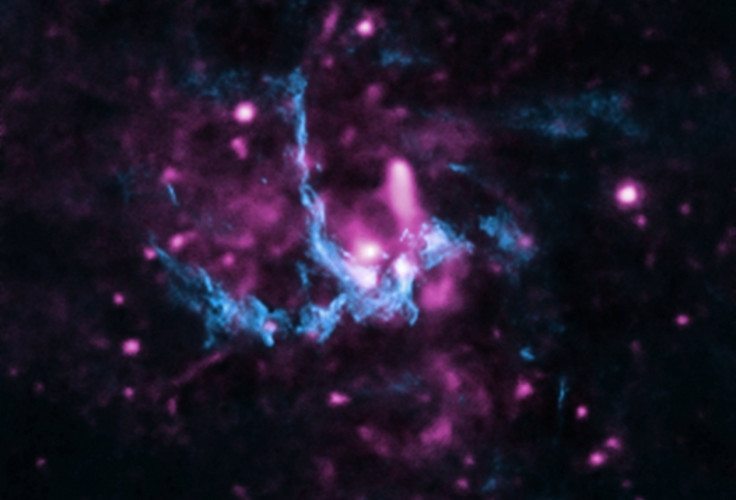Jet Of High-Energy Particles In Milky Way's Black Hole Confirmed; Astronomers Eye Unsolved Mysteries

Thanks to new results from NASA’s Chandra X-ray Observatory and the National Science Foundation's Very Large Array, or VLA, radio telescope, astronomers have been able to confirm evidence of a jet of high-energy particles in Sagittarius A*, or Sgr A*, the supermassive black hole at the center of the Milky Way galaxy.
Although previous studies had suggested the existence of a jet in the Milky Way’s black hole, they often contradicted one another were not considered definitive, as jets of high-energy particles are also found throughout the universe, outside of the Milky Way.These phenomena are produced by young stars and black holes a thousand times larger than the Sgr A*.
According to scientists, jets of high-energy particles are very crucial in transporting energy away from the central object and, on a huge scale, in regulating the rate of the formation of new stars.
"For decades astronomers have looked for a jet associated with the Milky Way's black hole," Zhiyuan Li of Nanjing University in China and the lead author of the study, said in a statement. "Our new observations make the strongest case yet for such a jet." The results of the study are due to be published in an upcoming edition of The Astrophysical Journal.
Scientists said the discovery of a jet from Sgr A* would help determine the direction of the black hole’s spin axis, which, in turn, could provide important clues about the growth history of the black hole.
Based on the study, astronomers have now concluded that the spin axis of Sgr A* is pointing in one direction, parallel to the rotation axis of the Milky Way, indicating that gas and dust have migrated gradually into the black hole over the past 10 billion years.
According to astronomers, Chandra and the VLA have detected X-rays and radio emissions produced by the jet as it runs into gas near Sgr A*. The two key pieces of evidence for the jet are a straight line of X-ray-emitting gas that points toward the black hole and a shock front -- similar to a sonic boom -- seen in radio data, where the jet appears to be striking the gas.
In addition, the energy signature in X-rays of Sgr A* also resembles that of jets coming from supermassive black holes in other galaxies. Jets are thought to be produced when some material falling toward the black hole is redirected outward, and according to astronomers, the jet from Sgr A* appears to be weak as the black hole is presently known to be consuming very little material.
However, another Chandra study revealed that Sgr A* has been much more active at consuming material in the recent past, and astronomers now believe that “when it stirs again, the jet may brighten dramatically.”
© Copyright IBTimes 2024. All rights reserved.






















